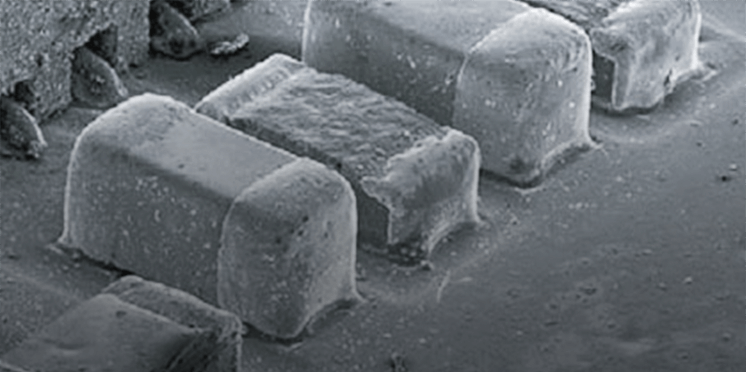後方散乱電子回折
後方散乱電子回折
electron backscatter diffraction, EBSD
[目次:理論(電子の散乱/回折/結像)]
試料からの非弾性後方散乱電子によって作られる菊池図形は試料の方位に依存して敏感に変化する。入射電子プローブで試料を走査してこのパターンの変化を解析することから、多結晶性試料を構成する各粒子の結晶方位の分布像を得る方法。空間分解能は~0.1μm、試料方位決定の分解能は~1°、取得角度範囲は~20°。TEM装置で行えないことはないが、通常はSEMで行われる。
A Kikuchi pattern, which is produced by inelastically backscattered electrons emitted from a specimen, sensitively changes with specimen orientation. "Electron backscatter diffraction (EBSD)" is a method for obtaining crystal-orientation distribution images of crystal grains of a polycrystalline specimen. To obtain the image, the incident electron beam (probe) is scanned over the specimen surface, and the orientation change of the Kikuchi pattern is observed. EBSD provides an image with a spatial resolution of ~0.1 μm and an angular resolution of ~1°. The angular range acquired by EBSD is ~20°. Normally, EBSD is performed in a SEM though this may be performed also in a TEM.
関連用語から探す
説明に「後方散乱電子回折」が含まれている用語






